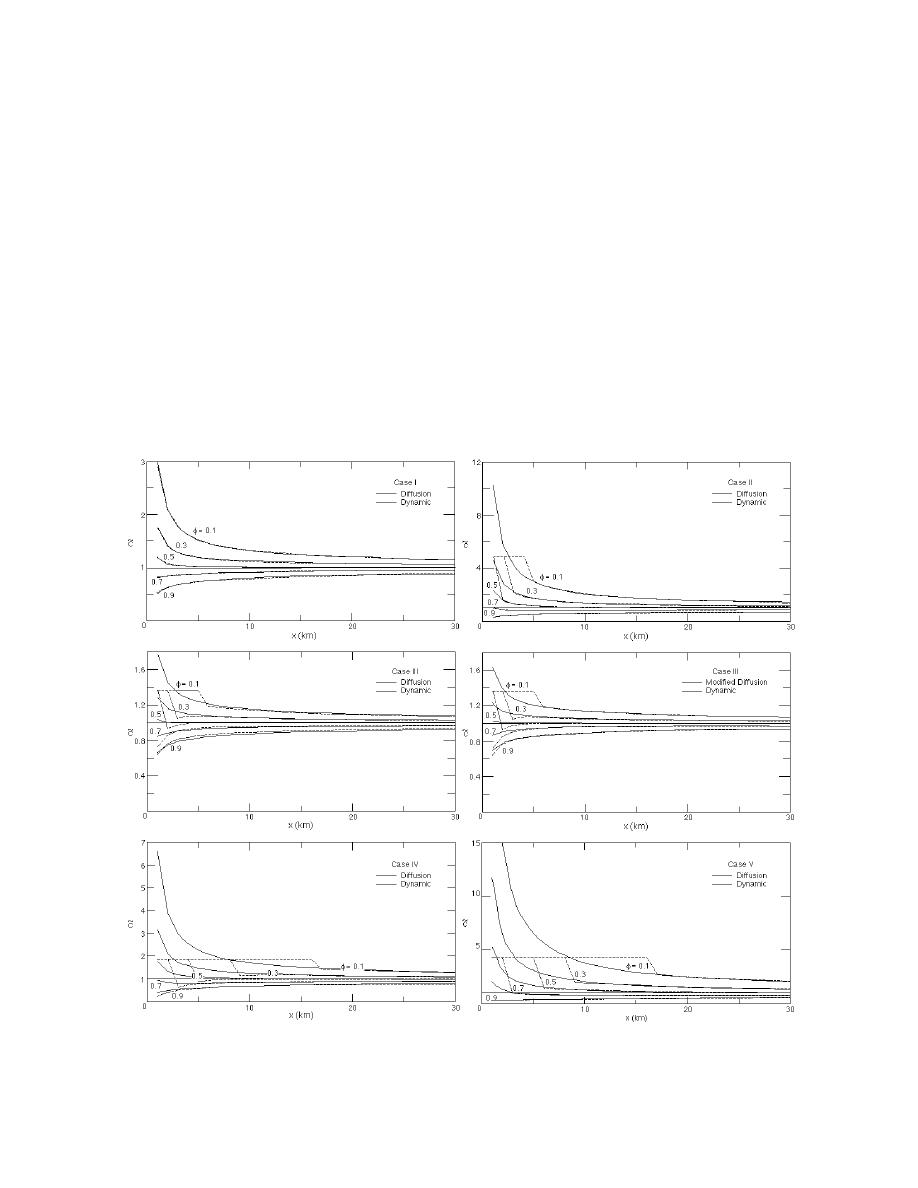
slope for case II is decreased relative to case I, while other parameters remain unchanged,
corresponding to significantly increased η and D, with constant F0. Case III is a shallow
high velocity flow with channel slope and velocity increased relative to the first two cases.
Parameters η and D are near those of the first case, but F0 is at the high end of the range.
Case IV represents a deeper and higher velocity flow than case I at an equal channel slope,
corresponding to large η and D, with a midrange F0. Finally, the flow in case V is deep and
relatively slow with the highest η and D, and F0 near that of cases I and II.
Dimensionless profile celerities of selected points (φ = 0.1, 0.3, 0.5, 0.7, 0.9) were obtained
with eq 17 and 23 for dynamic waves and diffusion waves, respectively, and results for all
cases are presented in Figure 2. In early time, the leading edge of the diffusion wave profile
moves downstream at a celerity that initially exceeds and later is less than the dynamic
wave celerity c+. The dynamic wave and diffusion wave profile celerities of all points con-
verge toward each other and the kinematic wave celerity with time. At the midpoint φ = 0.5
both profile celerities rapidly approach the kinematic wave celerity and then remain con-
stant. Smaller φ profile celerities remain higher than those of larger φ, and diffusion contin-
ues beyond 30 km in all cases.
In case I the discrepancies between diffusion wave and dynamic wave profile celerities
Figure 2. Dimensionless celerities of selected linear diffusion wave and dynamic wave profile points
for all cases plus case III with the modified inertial diffusion coefficient. Note the changes in the
celerity scale between panels.
10



 Previous Page
Previous Page
